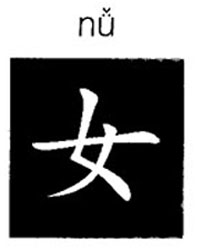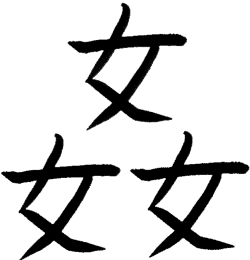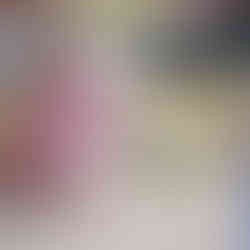The Chinese are obsessed with their written language and rightly so, it is beautiful and one of my favourite things about travelling in China is looking at all the signs and characters everywhere. People here have great respect for their language and also those who are calligraphy masters or in Chinese 'Shufajia'. In 1950s during the great leap forward there was an attempt to start using 'pinyin' of Roman alphabet instead of characters but thankfully this never took off.
Although us Westerners can see its beauty, it is really in understanding the meaning and context of each character that you can fully appreciate the intricacies of this fascinating language. Every stroke matters and every character is written in a certain way for a reason.
I spent many a night at university copying line after line of Chinese characters. You can use tricks to remember them though and many of the characters are stylised pictures of what they represent. See below the 'kou' is a square as that looks like a mouth. This square character is then used in other characters for words to do with your mouth like eating 吃, singing 唱 and drinking 喝 - each has the kou or square character at the start. Also, lots of others in the below picture including a tree with it's trunk and branches and fire, with the small strokes either side representing the flames.

One of my favourites though is 'nu', which means woman. Three's a crowd and in Chinese, if you group three 'nu's together the meaning is to have an affair.
The above are all simplified characters which were introduced during the 1950s by Mao in an attempt to increase literacy. There are five style of calligraphy, seal script is the oldest used I the Qing dynasty for stamps and seals. Then there is clerical script, semicursive script, cursive script and standard.
So, after many years learning, we decided to pick up a brush and ink pot and give the wonderful art of calligraphy a try. We did this in Shaxi old town but ask in your hostel and you can probably find a teacher in most places. You'll be surprised to hear that we're learning standard script using simplified characters, practising with characters that only have a few strokes.
This is honestly much much harder than it looks. Every stroke has a different thickness and various flicks involved and you have to roll the brush gently between your fingers to get the desired effect. Safe to say, in our hour long lesson, we did not exactly pick it up. Guess which one is Mike's and which one is the teacher's.
You need to know around 2000 - 3000 characters to read a newspaper but a well educated person in China would know around 6000 - 8000. All Chinese dialects (apart from Cantonese) use the same written characters. Unlike with our alphabet, where words will change to reflect changes and developments in the language, written Chinese has not changed for thousands of years.
Spoken Chinese and it's five tones
"Wo ting bu dong" or I don't understand, is a useful phrase for anyone visiting China and one I have used many, many, many times in the last few years.
There are eight main dialect groups in China. The one I'm learning and China's official dialect is Mandarin or Putonghua in Chinese, 'putong' meaning common and 'hua' meaning speech. Most people will speak putonghua across China although often with a local accent. The clearest accent and the best place to learn the language as a foreigner is Beijing and surrounding provinces. Asides from the eight major ones there are hundreds of local dialects that differ greatly - not surprising in a nation of over 1.3 billion people and country only a bit smaller than the whole of Europe.
Chinese is a tonal language as well and has five tones or 'shengdiao'. This is one of the toughest parts of learning for me. For any one word, there can be five different ways to pronounce it and each will have a different meaning. For example, the word 'ma' said using a different tone each time means mother, hemp, horse and to swear. So you can see it can be awkward and embarrassing when you accidentally ask a man if you can ride his mother, or ask a small child where their hemp is!
Words and their sounds and meanings also form the basis of many Chinese superstitions and customs. The word 'si' means four. Said using a different tone and the same word 'si' means death. Because of this you'll see apartment blocks with no fourth floor and the number four often missed off. Conversely, 'ba' or eight is a lucky number because it sounds similar to 'fa' which means fortune. Pretty much every wifi password in China is eight eights. 'Zhong' using one tone means clock but with another means 'death or to end' and because of this Chinese people never buy each other watches or clocks for presents as this is said to bring misfortune and bad luck.
There are also some great words and sayings in Chinese. A few of my favourites below:
- A computer is an "electric brain" - 脑子 - A pet is a "spoilt little thing" - 宠物 - A woman who is easy to seduce is like "instant noodles" - 方便面 - Your way of making a living is not your bread and butter but your "rice bowl" - 饭碗
I have been trying to give up Chinese for a good few years now. And I have been painstakingly trying to learn it for a good few more. It's an amazingly frustrating yet wonderful language and somehow, however downtrodden I feel and however hard I've tried to stop, I keep getting drawn back to it.
I would recommend anyone visiting China, especially if you plan to spend any length of time here, to try and learn even a few simple Chinese words. The people here respond to a simple 'ni hao' with smiles, giggles and excitement. In Zhenyuan Mike asked for a cold beer and the waiter was so delighted that he ran over to me to tell me how great Mike's Chinese was, which I already knew of course. I'm not sure who was more thrilled by the exchange. It will not only enrich your experience here but could also save you a few yuan along the way.















